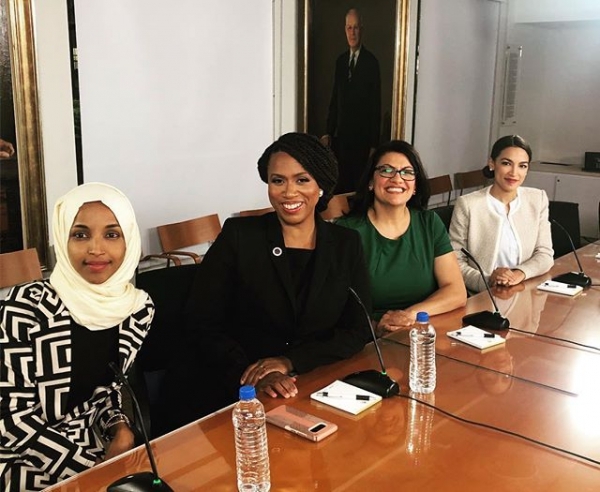SAXTONS RIVER — They came from north, south, east and west. They were military veterans, Muslims, Native Americans, LGBT women, and women of color. Progressive and powerful, they flowed like a river into a sparkling blue sea, flipping the House of Representatives, defeating long-term incumbents who thought their seats were safe, overturning state houses, taking their places on court benches.
Now they will assume leadership positions on several powerful House committees.
It seems fair to say their impact on governance in this country cannot be overstated, and it comes at a truly critical time.
It's also fair to say that the blue wave of women we witnessed was inspired by other pioneering women who dared to enter participatory politics.
* * *
Today's women stand on the shoulders of those models, women like Hattie Caraway (1878–1950), who became the first woman elected to serve a full term as a U.S. Senator representing Arkansas. She became the first woman to preside over the Senate.
Shirley Chisholm is another role model. In 1968, she was the first black woman elected to the U.S. Congress. She went on to be the first black candidate for a major party's nomination for president.
In 1984, Geraldine Ferraro, who served in the House, became the first female vice-presidential candidate representing a major U.S. political party.
Feisty women in Congress like Pat Schroeder of Colorado inspired many second-wave feminists to enter the political arena, while Barbara Mikulski served in both the House and the Senate, becoming the longest-serving woman in the history of the U.S. and the longest-serving U.S. Senator in Maryland history.
* * *
The Women's March on Jan. 21, 2017, the day after Donald Trump's inauguration, was the largest single-day protest in U.S. history. Not long afterwards, the #MeToo Movement was launched by activist Tarana Burke. Both were monumental events, and both helped more than 110 energetic, passionate, visionary women win positions of power across the country in 2018.
In all, 428 women ran for Congress or governor as Democrats (compared to 162 Republican women), and 210 of them were nominees on Election Day.
Maine and South Dakota saw their first female governors elected, while other women shattered records and broke precedent.
A third of female nominees for the House were women of color, and many newcomers beat out long-serving white male incumbents in primary races to go on to win seats in the House, bringing the percentage of women there to 25 percent. (With another 25 percent gain in 2020, the House would become representational of the country's population.)
* * *
Women in Congress and state leadership stand a good chance of cleaning up much of the mess they will encounter. They understand, often firsthand, the urgency of policies addressing gun violence, pay equity, family leave, sexual harassment, domestic abuse, education, affordable health care, and more.
They care about protecting the environment and getting a grip on climate change. (Several women heading into leadership are scientists).
Of course, they can't clean things up all by themselves, and they shouldn't be scapegoated when legislation fails, but they do bring a wealth of experience, expertise, and commitment to the job, with far less ego than many of the men on Capital Hill and in governors' mansions.
* * *
Research by scholars who study political leadership posted on theconversation.com reveals studies showing women collaborate more readily to solve problems and act as bridge-builders.
A 2017 study on leadership styles found that women are more likely to use inclusive thinking (“both/and”) in which they see conflict and tension as an opportunity for creative problem-solving. (Men are more likely to adopt an “either/or” way of thinking.)
Numerous studies on teamwork show that groups that include women function better, partly because women build social connections, enabling conflict resolution and increased trust.
Eleanor Roosevelt understood this tendency when she led a United Nations working group drafting the Universal Declaration of Human Rights after World War II.
The final document recognized for the first time that all people are guaranteed certain rights, regardless of religion, race, or creed.
The declaration launched the human-rights movement that defeated dictatorship in many parts of the world because Roosevelt managed to keep her colleagues focused on the urgency of developing and accepting the declaration, despite cultural differences and egos.
The Council on Foreign Relations found that peace talks involving women were more likely to reach long-lasting agreement, suggesting that the diversity of female leadership and legislators' democratic and participatory style will be vital in the House of Representatives.
In short, women's commitment to communication, collaboration, creative problem-solving, and a sense of community seems likely to effect real change in Washington and beyond.
Sure, there will be disappointments and difficult challenges. But there can be no doubt that having women in the House, be it federal or state, should go a long way to meeting the myriad demands we face.
They couldn't have arrived at a better time.
